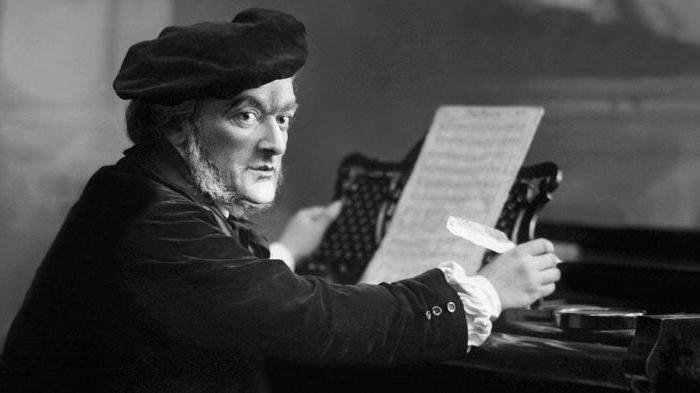Wagner Siegfried is a German composer and conductor. He wrote operas and instrumental works. Siegfried Wagner was a descendant of two great composers.
Composer Biography
Siegfried Wagner was born in 1869. He was the third child in the family. His father is the great composer Richard Wagner. Siegfried did not intend to choose music as a matter of his life and planned to become an architect. But he soon changed his mind. Z. Wagner's mother was the daughter of the great composer Ferenc Liszt. Siegfried's teachers were: Felix Motl, Engelbert Humperdinck and Heinrich Stein. His debut as a conductor took place in 1893.
Wagner Siegfried was not only a gifted composer, he also had the talents of a director and administrator. His mother handed him the direction of the Bayreuth Festival, which he coped brilliantly with.
A descendant of two great composers died in 1930 from a heart attack. The leadership of the festival was taken over by his sons - Wieland and Wolfgang.
Creative way
Wagner Siegfried wrote seventeen operas. Each of them has a fairy tale plot. Like his father, Siegfried wrote the libretto for his operas himself. He is also the author of several instrumental works. Z. Wagner is widely known only in Germany. Outside, his work has been little studied and unfamiliar to many.
Siegfried Wagner's works:
- "The Kingdom of Black Swans" (opera).
- Symphony in C major.
- "The command of the stars" (opera).
- Symphonic poem "Longing."
- "Loafer" (opera).
- Symphonic poem "Happiness".
- "The Blacksmith of Marienburg" (opera).
- Concert for violin and orchestra.
- "Angel of Peace" (opera) and others.
great father
Wagner Siegfried, as mentioned above, was the son of the great German composer. His father's full name is Wilhelm Richard. R. Wagner was born in Leipzig in 1813. His music had a huge impact on the culture of not only Germany, but throughout Europe as a whole. He was an opera reformer. He strove to bring this type of theatrical art closer to life. He also had his own view of orchestration. In his works, the orchestra sounded like an antique choir. Richard Wagner was an innovator in the field of harmony. His music is saturated with chromatism, dynamic and often intense. He introduced leitmotifs (short musical characteristics of characters and living creatures) into opera performances. His melodies lack tonic supports, they sound incomplete, due to which there is an increase in emotions, and listeners are constantly in tension. R. Wagner left a huge literary heritage. Of particular interest are his critical articles on music and his work on the history and theory of art.

The most famous works of Richard Wagner:
- "Flying Dutchman" (opera).
- Overture "Poland".
- "Lohengrin" (opera).
- Epic poem "Tristan and Isolde".
- Faust (opera).
- Tetralogy "The Ring of the Nibelung."
- "Tannhäuser" (opera).
The Nibelung Ring
For twenty-six years , Richard Wagner worked on his tetralogy The Ring of the Nibelung . Siegfried is an opera that goes into this cycle. There are four of them. In addition to Siegfried, the tetralogy includes the operas Valkyrie, Gold of the Rhine, and Death of the Gods. Together they last 15 hours. “Death of the gods" is the longest of them. It lasts more than five hours. The shortest is the “Rhine Gold”. Its duration is two and a half hours.
Not only music was written for his operas by Richard Wagner. Siegfried is the libretto of a work written by the composer himself, as well as all other operas. The plot of the tetralogy “The Ring of the Nibelung” is based on Icelandic sagas, German myths and medieval poems.
The tale created by R. Wagner tells the story of the evil gnome Alberich. He takes possession of great wealth - the gold of the Rhine. A hero named Wotan steals a golden ring from Alberich. It is not simple. The one who owns this ring becomes the master of the world and countless treasures. The gnome is enraged by the theft and curses the one who took possession of his property. Wotan does not know that the ring stolen by him is so powerful. He gives it to Fasolt and Fafner for building Valhalla. The gnome's curse begins to act. Fafner and Fasolt quarrel over the ring. As a result of the conflict, one kills the other. Fafner, who killed a friend, turns into a dragon. Only a brave hero can remove the curse and return the gold to the owner. And he appears. This is Siegfried. But they kill him, and he does not succeed in removing the curse. Valhalla burns down, and the gods, who committed all crimes, die.
Siegfried Idyll
The work that Richard Wagner created during the happiest period of his life is Siegfried Idyll. Years of exile and poverty are left behind. A prosperous and quiet life began. The work on tetralogy was completed. In addition, his beloved wife gave him the long-awaited son, whom R. Wagner named in honor of his beloved hero from The Ring of the Nibelung. He wrote Siegfried Idyll as a gift to his wife. The work is intended for performance by two clarinets, pipes, flute, bassoon, strings, oboe and two horns. Music radiates peace, light, purity.